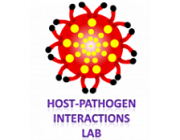Abstract:
Enterohaemorrhagic Escherichia coli and enteropathogenic E. coli are enteropathogens characterized by their ability to induce the host cell to form actin-rich structures, termed pedestals. A type III secretion system, through which the pathogens deliver effector proteins into infected host cells, is essential for their virulence and pedestal formation. Enterohaemorrhagic E. coli encodes two similar effectors, EspM1 and EspM2, which activate the RhoA signalling pathway and induce the formation of stress fibres upon infection of host cells. We confirm these observations and in addition show that EspM inhibits the formation of actin pedestals. Moreover, we show that translocation of EspM into polarized epithelial cells induces dramatic changes in the tight junction localization and in the morphology and architecture of infected polarized monolayers. These changes are manifested by altered localization of the tight junctions and 'bulging out' morphology of the cells. Surprisingly, despite the dramatic changes in their architecture, the cells remain alive and the epithelial monolayer maintains a normal barrier function. Taken together, our results show that the EspM effectors inhibit pedestal formation and induce tight junction mislocalization as well as dramatic changes in the architecture of the polarized monolayer.
